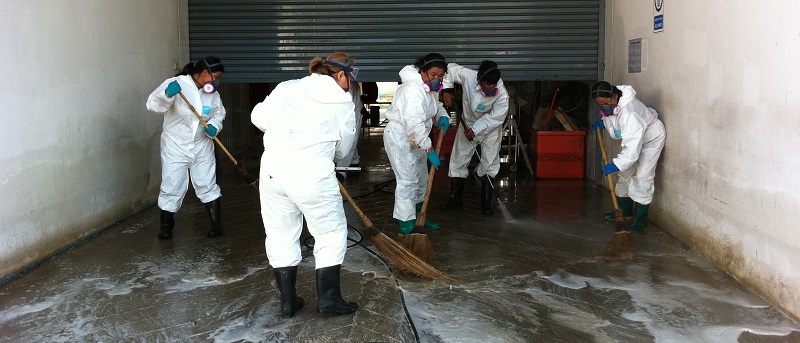Oil & Gas Laboratory, Thailand
SLP Environmental consultants were appointed by a global oil and gas services company to design, implement, manage and verify a flood rehabilitation and decontamination package of works for a specialist laboratory facility located in Bang Pa-In, Thailand. The facility was inundated as a result of the severe flooding experienced in Thailand in 2011 causing extensive damage to the building fabric as well as equipment and machinery.
As a result of the flooding the buildings were extensively contaminated by fungi (mold). Mold spores represent a potential health hazard to humans by causing allergic reactions and some molds actually excrete toxic compounds called mycotoxins. Certain mycotoxins can be harmful, even lethal, to humans when exposure concentrations are high enough.
SLP produced the Specification for the flood rehabilitation works and evaluated the contractors tenders on behalf of the client. Prior to the rehabilitation works commencing SLP conducted indoor air quality monitoring to determine the baseline spore concentrations and species composition. The contractor then stripped out all porous building materials from the ground floor of the property under controlled conditions and the supervision of SLP specialists. The buildings HVAC systems were also thoroughly cleaned with propriety decontamination agents during the cleaning works.
All staff engaged in the decontamination works utilised the appropriate Respiratory Personal Protective Equipment (RPPE) along with coveralls and gloves to limit exposure to potentially harmful mold spores.
Once the decontamination works were completed Indoor Air Quality (IAQ) monitoring was undertaken using specialist pumps and bioaerosol sampling equipment to determine the mold spore counts within the building post cleanup.
Specialist algorithms were used to assess whether the residual mold spore counts represented a potential risk to the health of the building occupants and to verify that the facility was safe for reoccupation.

